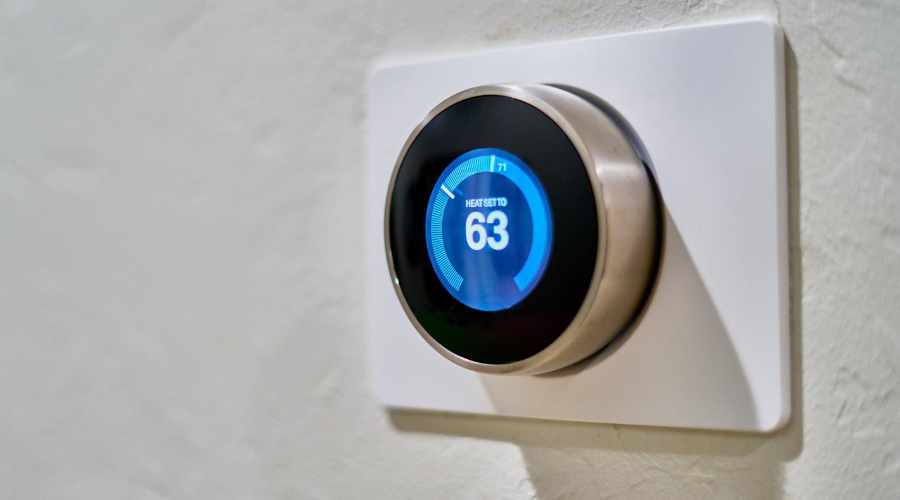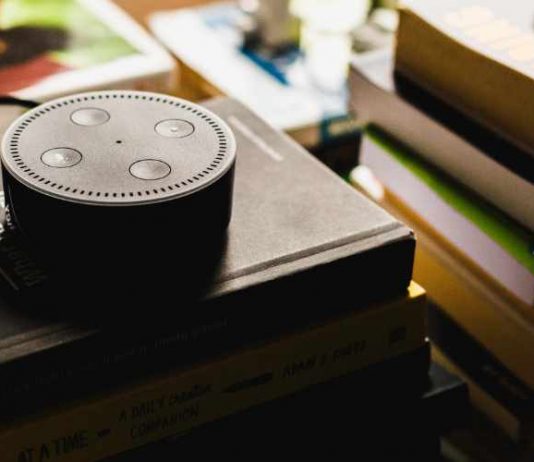If we tried to name industries that progressed thanks to the Internet of Things, we’ll think of many. Robots in healthcare? Check! Connected cars? Sure! Devices that replace people in retail? We got there, too.
By taking a single look around us, we realize that IoT became an irreplaceable addition to our lives.
But what about education? We rarely think of it as an industry where IoT can make a difference. It can! From smartboards to robots in classrooms, this technology has the potential to revolutionize the way we teach and learn.
Students love technology in any form, so IoT makes them happier while making schools more efficient at the same time.
Contents
IoT in Education Sector: What Changes Will We See?
1. Enhanced Security through Facial Recognition Systems
Without technology, how secure could a school really be? You could have security guards all over the place, but they wouldn’t be able to prevent all unwanted situations. School security is getting a serious issue. Children are an easy target to all kinds of threats, so schools started spending billions of dollars on high-tech that helps with the prevention.
Biometric facial recognition devices at the entrance can alarm about all strangers entering the facility. Colleges are also investing in special ID cards, which only allow students to enter the campus.
2. Student ID Authentication Is Easier
Have you heard about the Nymi wristband? It senses the heartwave of the user, so it’s easily used for their authentication. Devices like this one will become common in exam halls. Since the wristband detects the identity of a user and sends information to the professor’s tablet, it makes it impossible for another person to take a student’s test. Sure; students can still find analytical essay writing help when they want to cheat. But cheating during exams is practically impossible thanks to IoT.
3. Increased Efficiency
The previous two points lead us to another one. IoT devices, such as the Nymi wristband, will automatically detect presence in the classroom or exam hall. Thus, the teacher saves a lot of time that they would waste on taking attendance.
Unwanted visitors are kept away thanks to automated door locks that open through ID or face recognition.
This brings us to an important conclusion: schools are getting more efficient. They will hire fewer security guards. The teachers can start the lecture as soon as they enter the classroom. Time and resources are being saved thanks to IoT technology.
4. Better Energy Efficiency
A school, just like any other organization, must strive towards green energy alternatives. IoT greatly supports the implementation of the renewable energy system. Solar fields and wind farms are being automated thanks to data science and sensor-based technology.
Wind farms and solar fields rely on sensor-based technology, which adjusts the system to environmental conditions. Since more schools strive towards renewable energy systems, it’s clear why the progress in IoT is important for their functioning.
5. SMART Boards
This is the most obvious application of IoT in education. It practically invaded schools. It’s an interactive board that not only shows information but engages the students at the same time. It receives and processes information.
For example, the teacher can access an educational website and show it through the board. Then, they can write notes over the website. The students can easily save those notes.
It can be an expensive investment, with interactive displays reaching prices of over $10K. But there are cheaper options, so we can expect to see a growing number of classrooms across the world moving away from dusty boards. SMART is the future.
6. More Comfortable Learning Environments
The classroom is not the most comfortable space in the Universe. Anyone who’s ever attended school knows how the wooden chair feels after hours of being glued on it. Of course; students should go to school with the intention to learn. But should we deprive them of any comfort during the process?
No.
Schools are getting more comfortable, and IoT makes a contribution to that. Room temperature sensors are simple devices that adjust the air conditioning according to the environment. They consider the current temperature in the room, as well as the occupancy.
7. We Can Hear Sign Language
Students who need to sign language for communication often feel uncomfortable in the usual learning environment. That can be changed if more teachers learned sign language. But IoT is also part of the process. It helps these students to communicate with the rest of the class, even if the others don’t understand sign language.
We’re talking about smart gloves, which translate signs into speech. Whenever the student makes a sign, the gloves’ sensors vocalize them through a smartphone app. The gloves can also be used in learning sign language. If the other students in the class wish to learn it, the gloves will give feedback on the sign’s accuracy.

8. Textbooks Will Change
The trend of eliminating paper is going strong. Printed books are expensive and cause damage to our environment. That’s why students can simply scan QR codes that their professors give them. Then, they can instantly download the textbook on their device. They will save it to iBooks or any other app, and they will read it whenever they want to.
Learning is easier on these devices since the students don’t have to go through a pile of books to find the information they need. Through a simple search function, they will get on the right page in no time.
Sure; printed textbooks still exist. But they also changed thanks to technology. They feature QR codes, which take the students to different websites. They bring the written content to life.
IoT Changes Education, One Step at a Time
IoT devices are fascinating. They help us implement technology in every aspect of living. The industry is growing fast, and we’ll see more intelligent and efficient devices in the future. For now, it’s enough to say that the educational industry is slowly accepting the trends. IoT is making schools safer and more efficient. It also makes the learning process more engaging.
We’re excited to see what more the future will bring.


